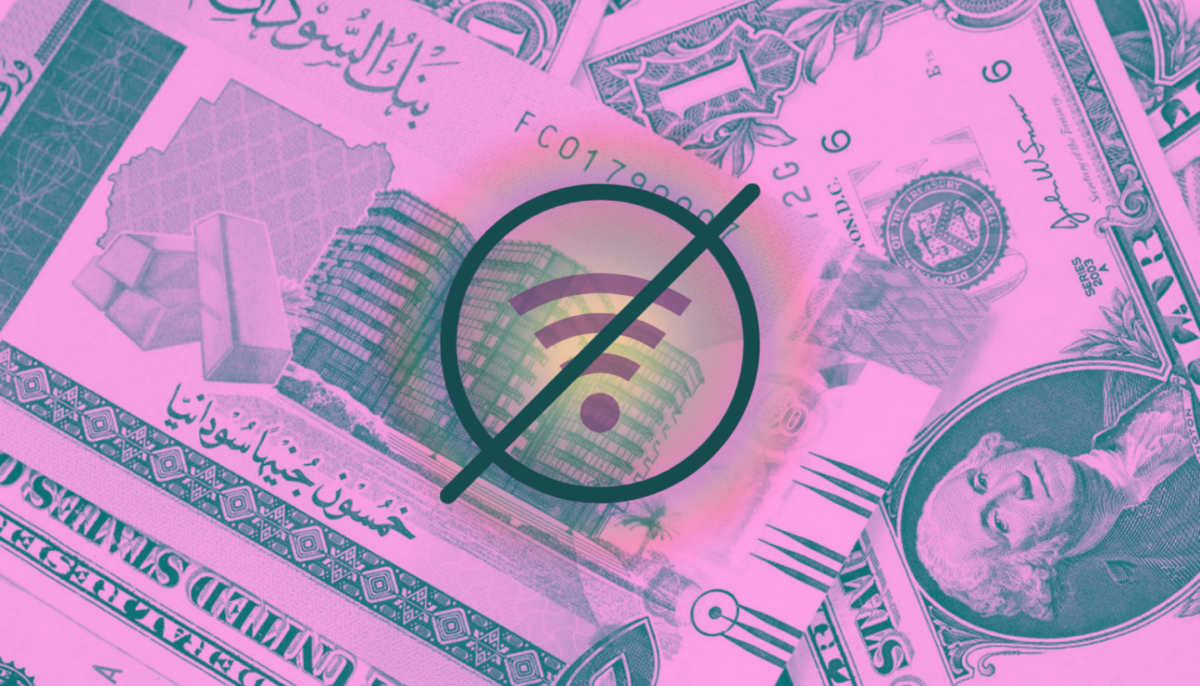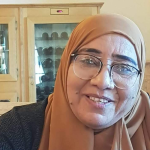In December 2020, people in Sudan found themselves paying more for the same old Internet data bundles, without necessarily finding any improvement in quality or expansion in services. On the contrary, it only became more difficult to study or work remotely during the national lockdown. Amid a number of financial and economic setbacks, last of which being the devaluation of the Sudanese pound against the US dollar, Sudanese authorities were no longer capable of meeting the surge in demand for Internet and telecommunication services.
By early 2021, 323,000 new subscribers joined the Internet in Sudan, marking a 2.4% increase compared to 2020, and a prevalence rate of nearly 30.9%. However, this did not seem like a strong incentive to improve Internet services, and students learning remotely suffered as a result. What’s worse, the Sudanese government shut down the Internet in June during national exams, under the pretext of “preventing cheating.”
“Students in Sudan are being seriously challenged, as they suffer from slow and interrupted Internet connection and continuous power cuts. Teachers and students alike are also struggling with using electronic applications,” said Riham Hussein, remote student at the Faculty of Mathematics in Khartoum University.
Mahmoud El-Hajj, father of university students, found it difficult to secure remote learning requirements for his children, whereby he had to purchase a smartphone for each of his sons as well as a computer “under dire economic circumstances,” adding that the price increase on Internet fees in exchange of “poor services” has only made things worse.
A Crumbling Internet Infrastructure
Tarek Hassan, an Engineer at MTN Sudan told SMEX that the mediocre Internet services in Sudan are partly due to the “poor quality of the current low-cost fiber optics network that links Sudan to the Internet.”
“Internet connection reaches Sudan via cables from Egypt through the Red Sea,” he explains, adding that, upon reaching Sudan, the single-mode optical fiber technology is distributed according to the instructions of the Telecommunications and Post Regulatory Authority, based on each telecom company’s frequency and under broadcasting regulation laws. “Each telecommunications company has a number of Mobile Switching Centers (MSCs), whereas MTN only has three, an unrealistic number for a country as large as Sudan,” he notes.
As for the interruption in Internet services due to power cuts, Hassan notes that fiber optic cables are linked to towers that cover specific areas using electromagnetic waves. Known as Base Transceiver Stations (BTS), these towers are fuelled by the state’s electricity power network as well as gas or diesel oil generators. As such, should the state network experience any power cuts, and if generators are unable to compensate for the entire duration of the blackout, Internet services become severely compromised.
Sudan also suffers from low Internet speed and limited capacity due to “[T]he weak telecommunications infrastructure and the inability to purchase spare parts from abroad, given the Sudanese pound’s deteriorating value against the US Dollar and the economic sanctions against Sudan.”
On another note, Hassan believes that the increased demand on the Internet during lockdown could be an opportunity for telecom companies to upgrade their infrastructure, stating that MTN is opting for fiber optics to transfer audiovisual data and enhance broadband services.
It is worth noting that Zain Sudan has raised its internet fees, often exceeding the original prices by four to five times. For example, the daily 250 MBs internet bundle has gone from 29 to 185 SDPs, while the weekly 5 GBs bundle went from 488 SDPs to 2116 SDPs. Likewise, the fees for the monthly 10 GBs bundle and the 2-months 24 GBs bundle also soared from 675 to 3075 SDPs, and from 1033 to 5836 SDPs respectively. In response, the Sudanese Transparency Organization issued a statement denouncing the chaotic and hefty internet pricing in Sudan.
Further Marginalization in Rural Areas
Director of Remote Learning at Omdurman Islamic University, Doctor Mohamad Bashir Ezzedine Al-Bashir, stresses the need to address the issues faced by students, particularly the lack of internet access in several regions. “While city residents are complaining of poor internet connection, people in rural areas barely have any electricity and are experiencing grim living conditions.”
Mossaab Homrani, a Lecturer at the Department of Libraries and Information in Omdurman Islamic University, seconds Dr. Al-Bashir, stressing the importance of Internet accessibility for students, who are now being forced to move to the city to attend classes remotely. Homrani also suggests making the Internet free for students and the education sector as a whole: “Telecommunications companies should partly cover the costs as part of their social responsibility, while the state should cover the remaining part as a contribution to the education sector.”
Temporary Solutions
Software Director at the National Information Center, the government’s IT advisor, Engineer Aaref Abdulkader reiterates the huge discrepancy in Internet quality across Sudan.
He proposes that universities share costs to establish remote learning centers in areas that suffer poor Internet coverage and electricity, thus facilitating Internet access to students by saving them commuting and accommodation costs and slashing the university’s operational expenditure.
Abdulkader also proposes that universities utilize the National Information Center’s state-of-the-art infrastructure, which can host different applications, thus cutting the university’s operational costs and creating an education network across the center and the different states.
However, Abdulkader offers only temporary solutions for one sector, in the absence of a basis for a national strategy. To date, the Sudanese government, which is navigating a severe economic plight and the collapse of the local currency, is yet to come up with a plan to subsidize and bolster the telecommunications sector, especially when it is strained under the tremendous demand for Internet following the digital shift during the pandemic.



